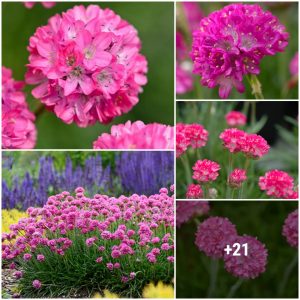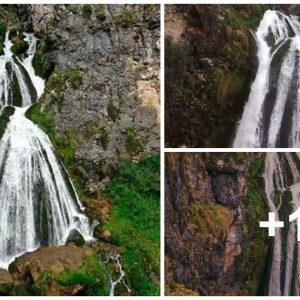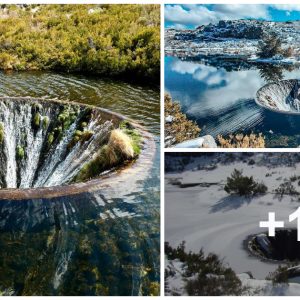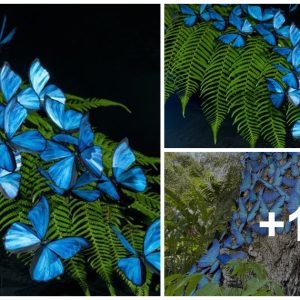
If you know that your soil is washing away, then there are several steps that you can take to stop erosion.
You may wish to consider building retention walls to hold your soil in place. Any bald spots should be covered immediately. The grass will not grow on many slopes, but there are beautiful plants that will thrive there.
You may also want to divert rainwater to a rainwater garden. Ferns and other plants that soak up moisture can be used to soak up water before running off.
Choosing plants that are shown to effectively stop erosion gives you plenty of excellent choices.
Creeping Myrtle

If you live in zones 4 to 8, then creeping myrtle is a great choice. This plant that grows up to 6-inches tall should be planted where it gets at least six hours of sunlight daily. Lavender-blue, phlox-like flowers can be up to 1 inch across appear on trailing stems in late spring and early summer. The leaves on this plant are evergreen, so they look beautiful in the winter when almost everything has died.
Forsythia

There are at least 11 species of forsythia that you may want to consider using to stop erosion. You can find options that grow from 3-feet-to-11-feet tall. This plant that grows well in zones 5 to 8 puts on four-lobed springtime flowers that are usually yellow. Usually, the flowers on this plant appear before it leaves out. Then, once the flowers fade, seed capsules appear containing winged seeds.
Spotted Dead Nettle

This plant that can grow up to 8-inches tall has a 3-feet spread. This shade-loving plant blooms in the late spring and early summer, but you may hardly notice its two-lipped, reddish-purple flowers among all the foliage. Spotted dead nettle spreads by sending out long-running vines and putting new roots down from these vines. The roots help to control erosion.
Black Mondo Grass

If you are looking for an option that grows up to 1-foot tall in zones 6 to 9, this may be the right plant. Black Mondo grass produces basil leaves that are up to 12-inches long. In the summer, this member of the lily family puts on white, bell-shaped flowers that may have a blue or lilac hint. After the flowers fade, the plant puts on dark-purple berries that are glossy and about the size of a pea.
Rockspray Cotoneaster

You are likely to love the look of the rockspray cotoneaster because of the contrast between its red fruit and its green leaves. This plant that grows in the sun in zones 4 to 7 can be evergreen in the southern part of its growing region. The leaves turn a reddish-purple in the fall. In the spring, this plant that often grows to be about 36-inches tall puts on tiny, five-petaled flowers that are followed by the scarlet-red fruit.
Shrubby St. John’s wort (Hypericum prolificum)

This rounded shrub can grow to be 4-feet tall in zones 3 to 8, and it loves the shade. In early-and-mid-summer, when most plants start to fade, it will reward you with clusters of sunshine-yellow flowers that have five petals and can be up to 1-inch in diameter. Birds love the cone-shaped seeds on this shrub that appear after the flowers fade.
Japanese spurge

If you live in zones 5 to 9, then you will love the whorls formed by the evergreen leaves on this plant. The great news is that the dark green leaves mottled with yellow are extremely attractive, and they also help stop soil from eroding. This plant produces flowers spikes in the early spring that can be up to 2-inches tall, and they are covered in tiny white flowers.
Ostrich fern

In zones 3 to 7, ostrich ferns are very useful at trapping water so that runoff does not occur. These fern plants that can grow up to 5-feet tall and be 8-feet wide produce fonds that look like ostrich plumage. If you are thinking about growing this one, it needs lots of humidity, so be sure you live in a climate that gets rain throughout the spring and summer.
Creeping Phlox (Phlox subulata)

This sun-loving plant struggles to reach 6-inches tall. Instead, it creeps until it forms a beautiful carpet of foliage that helps to hold soil in place. This plant that prefers dry and rocky or sandy soil produces loads of tubular reddish-purple, pink or white flowers that can be up to 0.75-inches wide in the spring. Each flower has five petal-like lobes that are flat.
Cotoneaster

If you live in zones 4 to 7, the birds will love you as they dine on this plant’s red berries throughout the colder months. Consider the height of cotoneaster that best meets your needs because you can find options that grow from 1-to-30-feet tall. This plant produces small five-petal flowers in the spring that give way to the red berries during the summer.
There are many plants that you can use to help stop erosion. Think about the plant’s needs compared to the area where you want to plant it to make the best choice.





